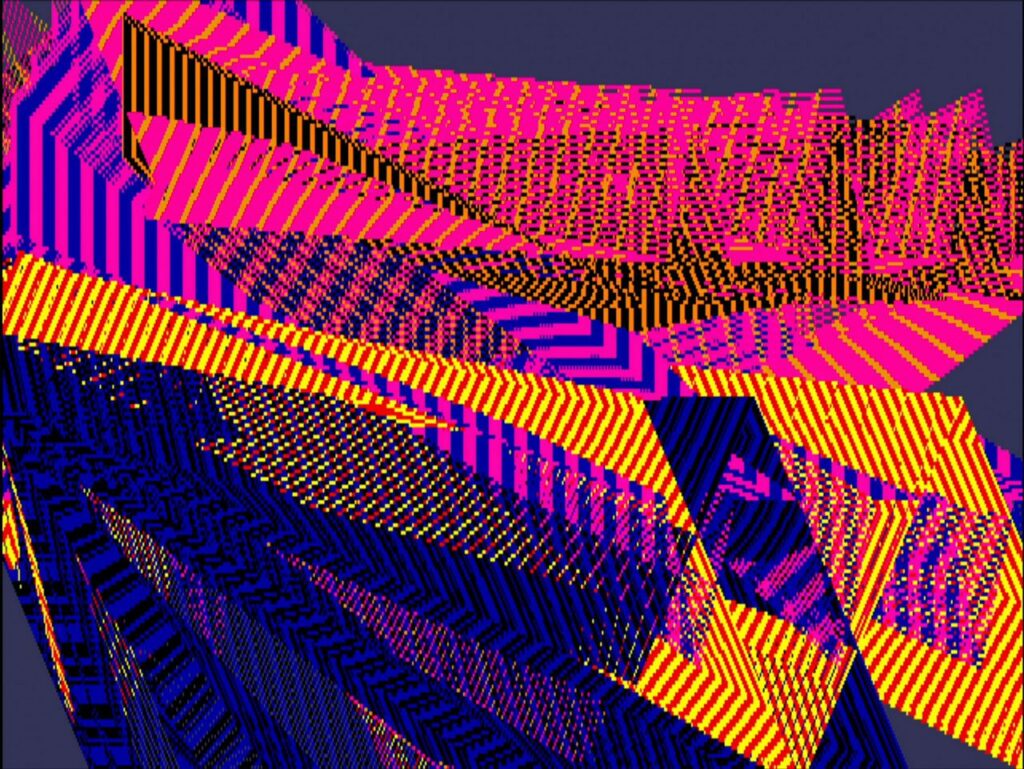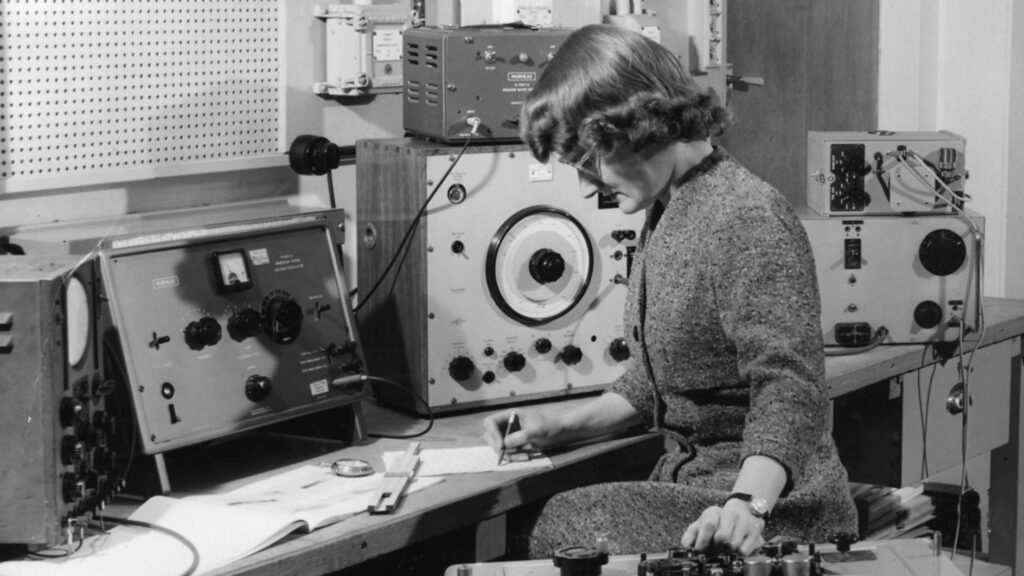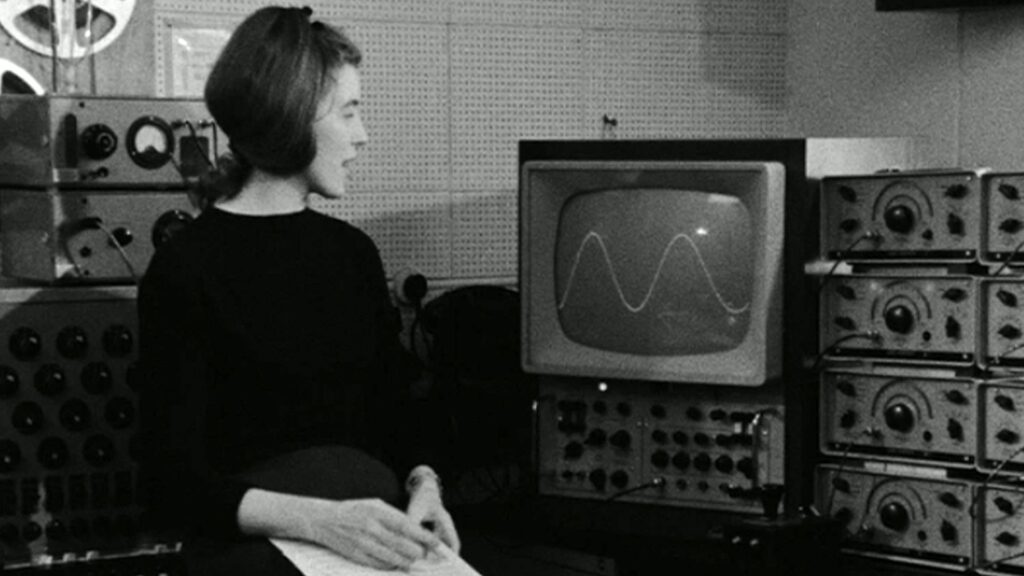Brilliance doesn’t always make a lot of noise, and leaving a mark doesn’t always mean being in the spotlight. This is a tribute to the women who helped shape our world from behind the scenes : coders, sound artists, space explorers, and digital pioneers who were imagining and building the future long before the rest of us could see it coming.
🌀 Samia Halaby – Kinetic Paintings (b. 1936)
📀 Daphne Oram – Oramics & Sound Design (1925–2003)
🎛 Delia Derbyshire – Musique Concrète / Electronic Music (1937–2001)
🔢 Ada Lovelace – First Programmer (1815–1852)
🎨 Lillian Schwartz – Digital Art Pioneer (b. 1927)
🕹 Mabel Addis – First Video Game Writer (1912–2004)
📡 Valentina Tereshkova – First Woman in Space (b. 1937)
🎛️ Laurie Spiegel – Algorithmic Music Pioneer (b. 1945)
📼 Shu Lea Cheang – Net Art & Cyberfeminism (b. 1954)
🌀 Samia Halaby – Kinetic Paintings (b. 1936)
A Palestinian-American painter and digital art pioneer, Halaby fused abstraction with programming in the 1980s.
• Used a Commodore Amiga 1000 and taught herself BASIC and C to create kinetic paintings — algorithmically generated moving visuals.
• Merged activism with art, advocating for Palestinian rights through radical abstraction and digital performance.
• Way ahead of the digital art curve.

Samia Halaby, 1988 kinetic painting “Fold 2”
I created my own Kinetic painting here, but mine is generative – https://kurtgrung.com/blog/p5-generative-kinetic-art/
📀 Daphne Oram – Oramics & Sound Design (1925–2003)
Inventor of a visual music synthesis system and founder of the BBC Radiophonic Workshop.
• Created the Oramics Machine — drawing shapes on film to generate sound.
• One of the first to explore audio synthesis as a visual and artistic practice.
• Her tech predated graphic sequencers by decades.

Daphne Oram, at the BBC Radiophonic Workshop, 1958.
🎛 Delia Derbyshire – Musique Concrète / Electronic Music (1937–2001)
British sound engineer and composer at the BBC Radiophonic Workshop.
• Most famous for realizing the “Doctor Who” theme in 1963 — entirely by hand with tape loops and oscillators.
• A master of musique concrète — manipulating recorded sound to create eerie, futuristic audio before synths were mainstream.
• Electronic music wouldn’t be the same without her.

Delia Derbyshire, BBC Radiophonic Workshop 1965.
🔢 Ada Lovelace – First Programmer (1815–1852)
British mathematician and visionary who imagined the future of computing — in the 1840s.
• Wrote the first algorithm for Charles Babbage’s Analytical Engine.
• Saw computers as more than calculators — she predicted they’d create music and art.
• The original visionary.
🎨 Lillian Schwartz – Digital Art Pioneer (b. 1927)
One of the first artists to work with computer-generated imagery at Bell Labs.
• Created digital art and computer animation in the 1960s with engineers and scientists.
• Her films blended math, neuroscience, and surrealism before GUIs even existed.
• Made the future of digital art look like a trippy dream.
🕹 Mabel Addis – First Video Game Writer (1912–2004)
Before “game design” existed, she was doing it.
• Wrote the narrative for The Sumerian Game in 1964 — the first known video game story.
• Combined storytelling, math, and interactivity decades before gaming became an industry.
• A true OG of interactive fiction.
📡 Valentina Tereshkova – First Woman in Space (b. 1937)
In 1963, she orbited Earth 48 times — solo.
• First woman and first civilian to go to space (NASA didn’t send a woman until 1983).
• Also trained in coding, engineering, and re-entry survival.
• Space badass.
🎛️ Laurie Spiegel – Algorithmic Music Pioneer (b. 1945)
Composer, coder, and electronic innovator in the 1970s.
• Developed Music Mouse, a program that let anyone compose generative music.
• Mixed code and creativity with elegant results.
• Her track Kepler’s Harmony of the Worlds was sent into space on the Voyager Golden Record.
📼 Shu Lea Cheang – Net Art & Cyberfeminism (b. 1954)
Queer, radical, and futuristic — one of the first to explore the internet as a site for art.
• 1998’s Brandon was the first web-based artwork commissioned by the Guggenheim.
• Her work blends gender theory, code, and performance art across digital platforms.
• Still hacking the system from within.
